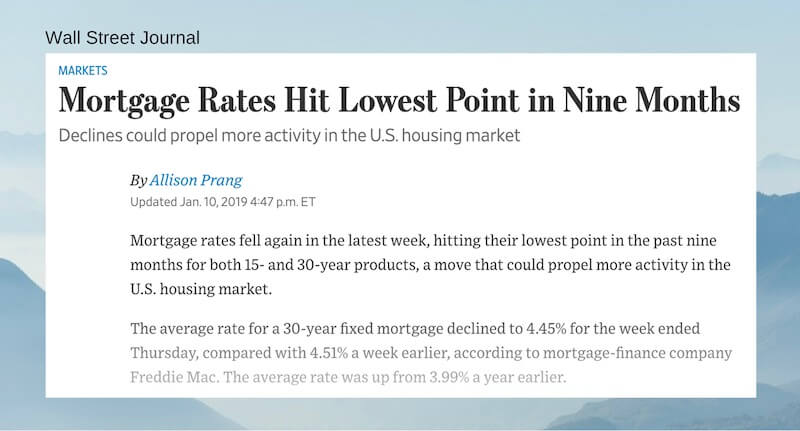
This article covers the topic of how is PMI calculated, including what LTV ratios are, monthly premiums, and LTV ratios. Piggyback mortgages are also available. This topic is very important for homebuyers. To avoid being overcharged, it is important to know your LTV ratio.
Lender-paid, mortgage insurance (LPMI).
PMI is a type of mortgage insurance that protects lenders from default. A monthly fee is paid by the borrower to add to the mortgage payment. The insurance coverage will be in effect for the term of the loan. However, it can be cancelled by the borrower when he reaches 20% equity.
LPMI isn't the right choice for every borrower. It can increase monthly payments, but it can lower them over time. The lender adjusts the mortgage rate to cover the insurance costs. The higher interest rate results in a higher monthly payments. LPMI isn't the best option if you don't have the budget for a monthly payment. To be eligible for LPMI, you must have good credit.
Piggyback mortgage
Consider how PMI will impact your monthly mortgage payments when you apply for a mortgage. Typically, you'll need to have a loan-to-value ratio (LTV) above 80% to qualify for PMI. If your LTV is lower than that, you may need to negotiate with your lender to eliminate PMI.

You can avoid PMI altogether by making a down payment of at least 20%. In most cases, this means putting at least $50,000 down to buy a $250,000 home. If you have less money to put down, you can also opt for a piggyback mortgage - a second mortgage loan that finances the remaining 80 percent of the loan balance. These loans usually have higher interest rates that other mortgages.
Monthly premiums
A PMI policy covers the borrower's mortgage against any loss. There are two options for purchasing PMI: a borrower-paid, monthly plan or a lender-paid one. The borrower paid plan is the most commonly used. This involves paying a single premium upfront, and then the rest monthly. The lender-paid plan is more expensive and usually involves a higher mortgage origination fee and interest rate.
After closing the mortgage loan, the borrower pays monthly premiums for PMI. These premiums cannot be refunded, even if the homeowner moves. Some lenders roll PMI into the monthly mortgage payment, so you don't need to make a separate payment. Some lenders let you pay the premium upfront, while the remainder is due monthly.
LTV ratios
LTV ratios allow you to compare the loan amount and your home's value. LTV ratios are used by lenders in determining if you are a suitable candidate for a loan. LTV can help you get a competitive home loan.
Private mortgage insurance (PMI), for conventional loans that have a 20% downpayment, may be required to protect your lender. These policies generally cost 0.5% - 1% of loan amount per year. They will be paid until the LTV ratio drops to below 78%. An additional $104 to $208 per month would be required for a $250,000 mortgage.

Credit score
There are a few factors that go into how PMI is calculated. All factors play a part when calculating PMI. These include the FICO credit score of the borrower, loan-to value ratio and loan recovery percentage. Although these factors may seem complex, they are very easy to understand. A higher LTV will generally mean a higher PMI premium.
Higher mortgages will incur higher PMI costs, so borrowers with better credit scores may be able to get a loan with lower PMI. They can ask for a particular amount of PMI and ask the lender to calculate it for them. Also, the property's current value should be taken into account when calculating PMI. This information can be obtained from a recent appraisal. You can also estimate it by determining the price of the house and current mortgage balance. To determine the true value, subtract the down payment.
FAQ
How can I fix my roof
Roofs can leak because of wear and tear, poor maintenance, or weather problems. Minor repairs and replacements can be done by roofing contractors. Contact us for further information.
What are the drawbacks of a fixed rate mortgage?
Fixed-rate mortgages tend to have higher initial costs than adjustable rate mortgages. A steep loss could also occur if you sell your home before the term ends due to the difference in the sale price and outstanding balance.
How do I calculate my rate of interest?
Interest rates change daily based on market conditions. The average interest rates for the last week were 4.39%. To calculate your interest rate, multiply the number of years you will be financing by the interest rate. For example, if $200,000 is borrowed over 20 years at 5%/year, the interest rate will be 0.05x20 1%. That's ten basis points.
Can I buy my house without a down payment
Yes! There are many programs that can help people who don’t have a lot of money to purchase a property. These programs include FHA, VA loans or USDA loans as well conventional mortgages. For more information, visit our website.
What should I do before I purchase a house in my area?
It depends on how much time you intend to stay there. If you want to stay for at least five years, you must start saving now. If you plan to move in two years, you don't need to worry as much.
Statistics
- The FHA sets its desirable debt-to-income ratio at 43%. (fortunebuilders.com)
- This seems to be a more popular trend as the U.S. Census Bureau reports the homeownership rate was around 65% last year. (fortunebuilders.com)
- Some experts hypothesize that rates will hit five percent by the second half of 2018, but there has been no official confirmation one way or the other. (fortunebuilders.com)
- It's possible to get approved for an FHA loan with a credit score as low as 580 and a down payment of 3.5% or a credit score as low as 500 and a 10% down payment.5 Specialty mortgage loans are loans that don't fit into the conventional or FHA loan categories. (investopedia.com)
- Over the past year, mortgage rates have hovered between 3.9 and 4.5 percent—a less significant increase. (fortunebuilders.com)
External Links
How To
How to become a broker of real estate
You must first take an introductory course to become a licensed real estate agent.
The next thing you need to do is pass a qualifying exam that tests your knowledge of the subject matter. This requires you to study for at least two hours per day for a period of three months.
This is the last step before you can take your final exam. In order to become a real estate agent, your score must be at least 80%.
You are now eligible to work as a real-estate agent if you have passed all of these exams!